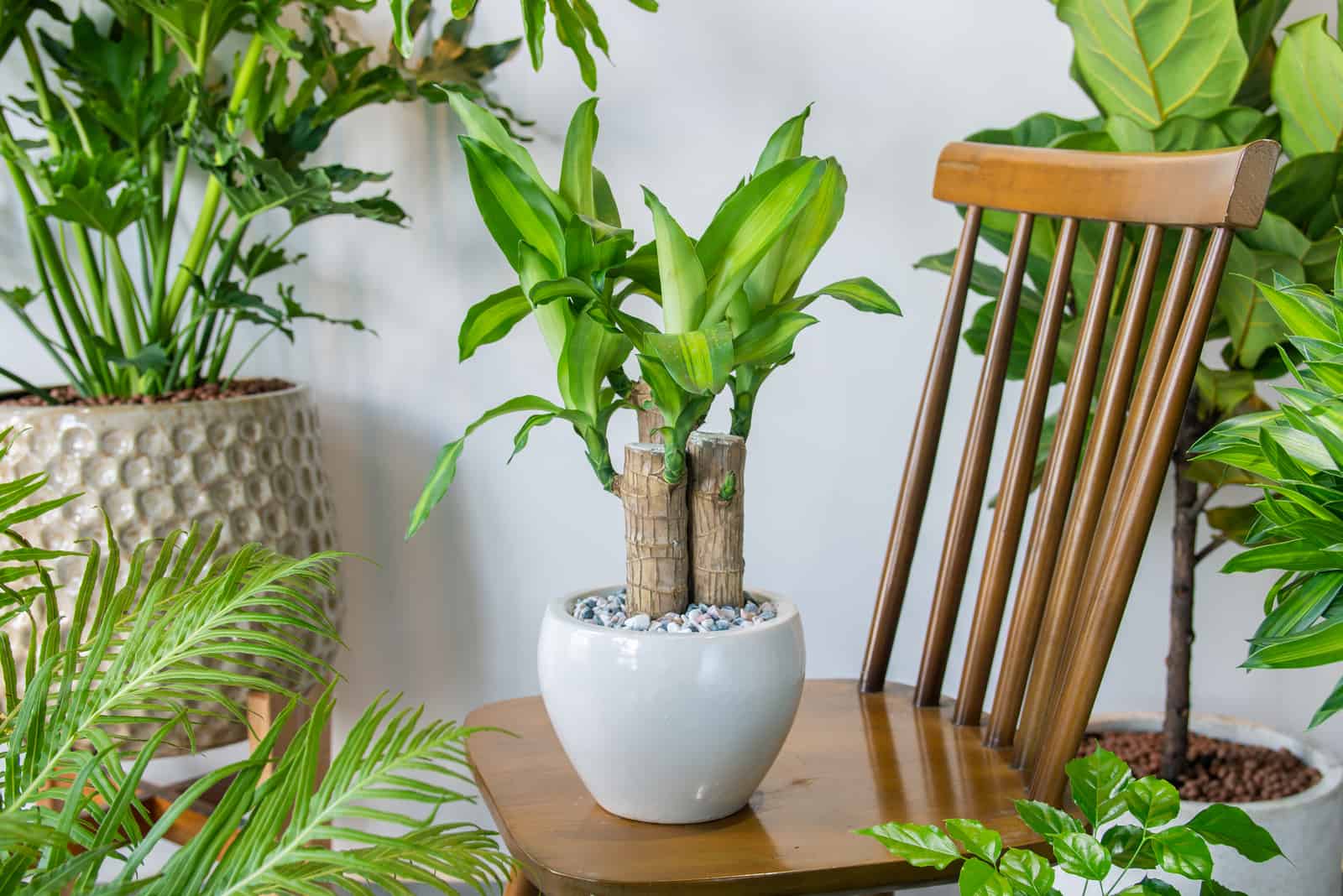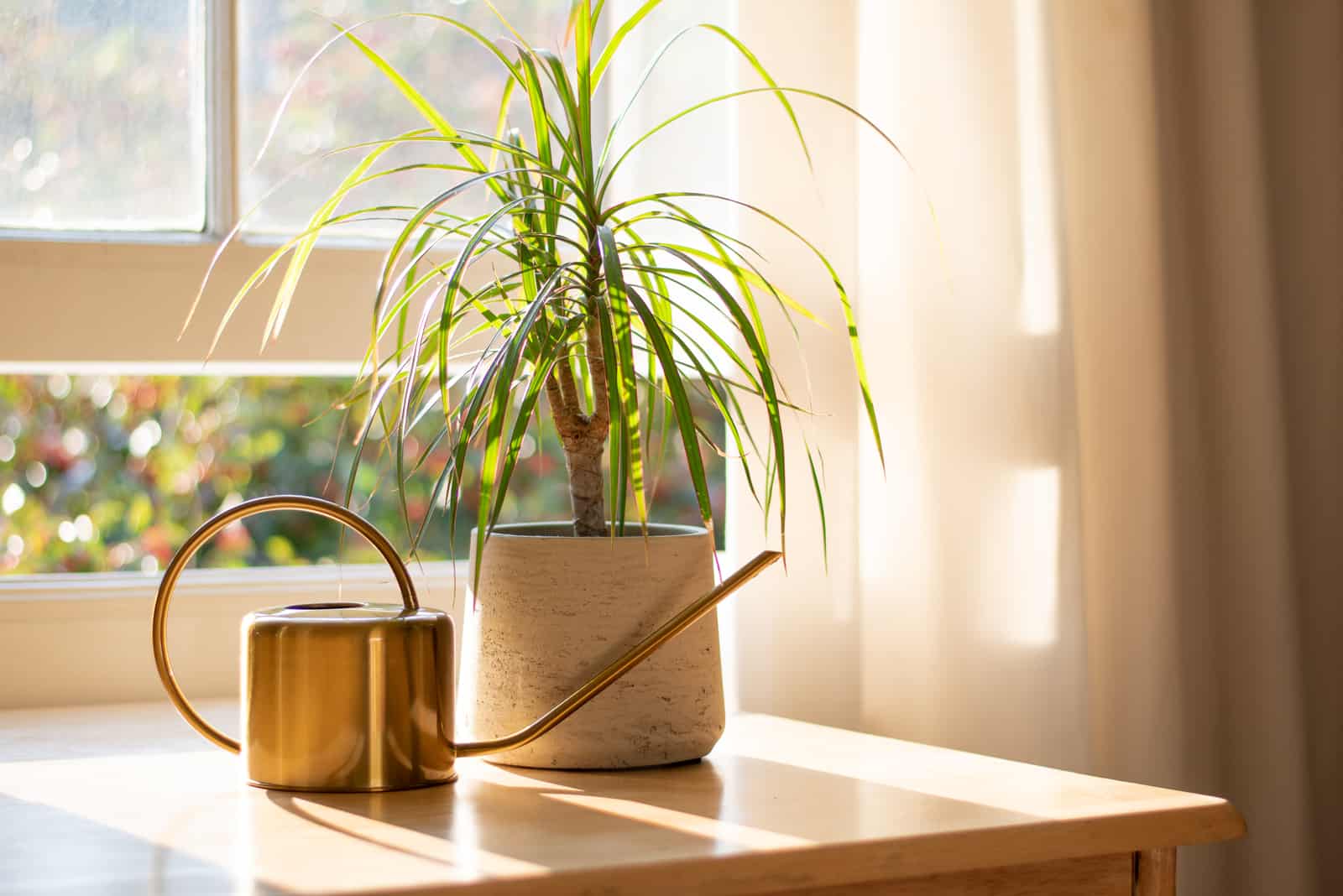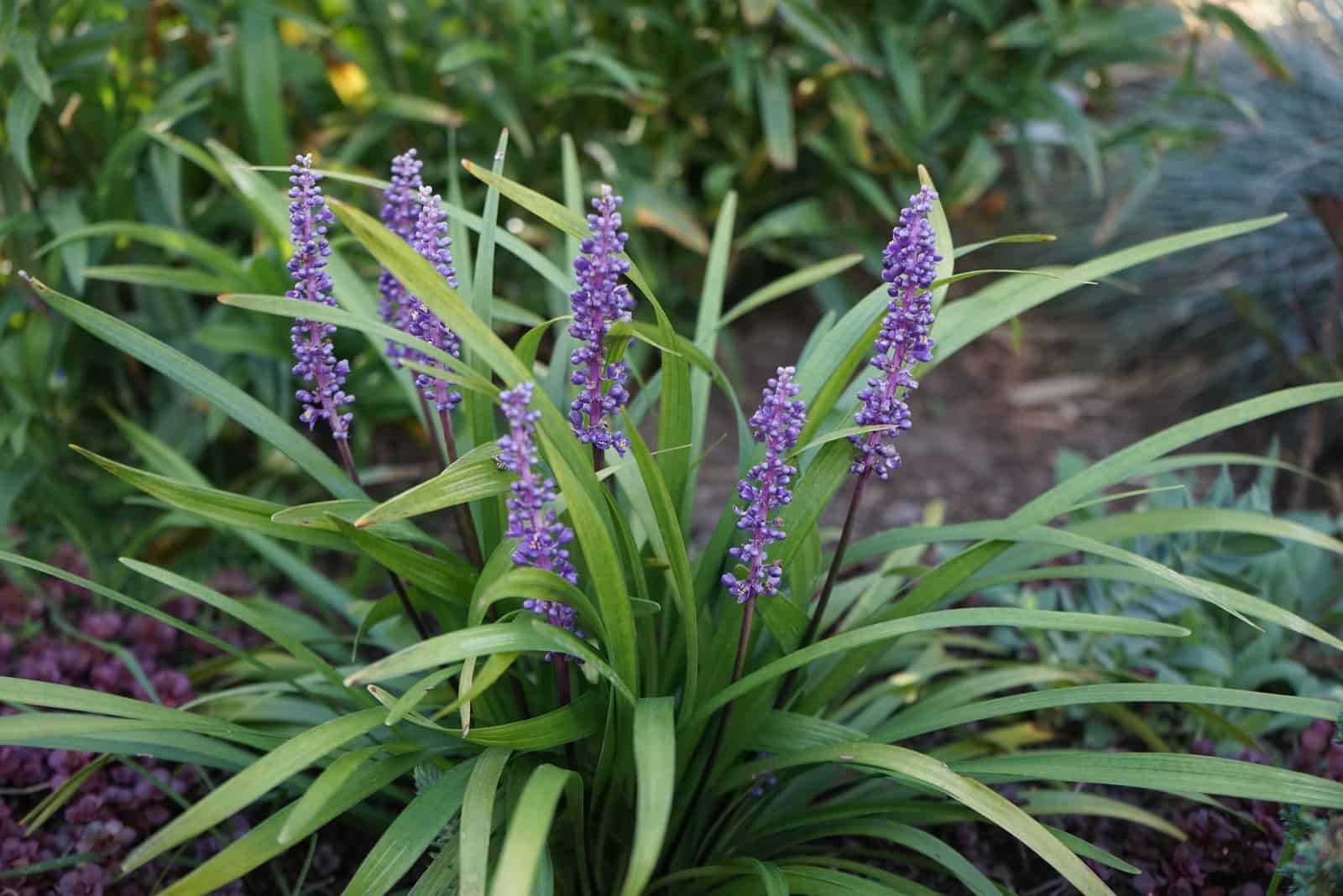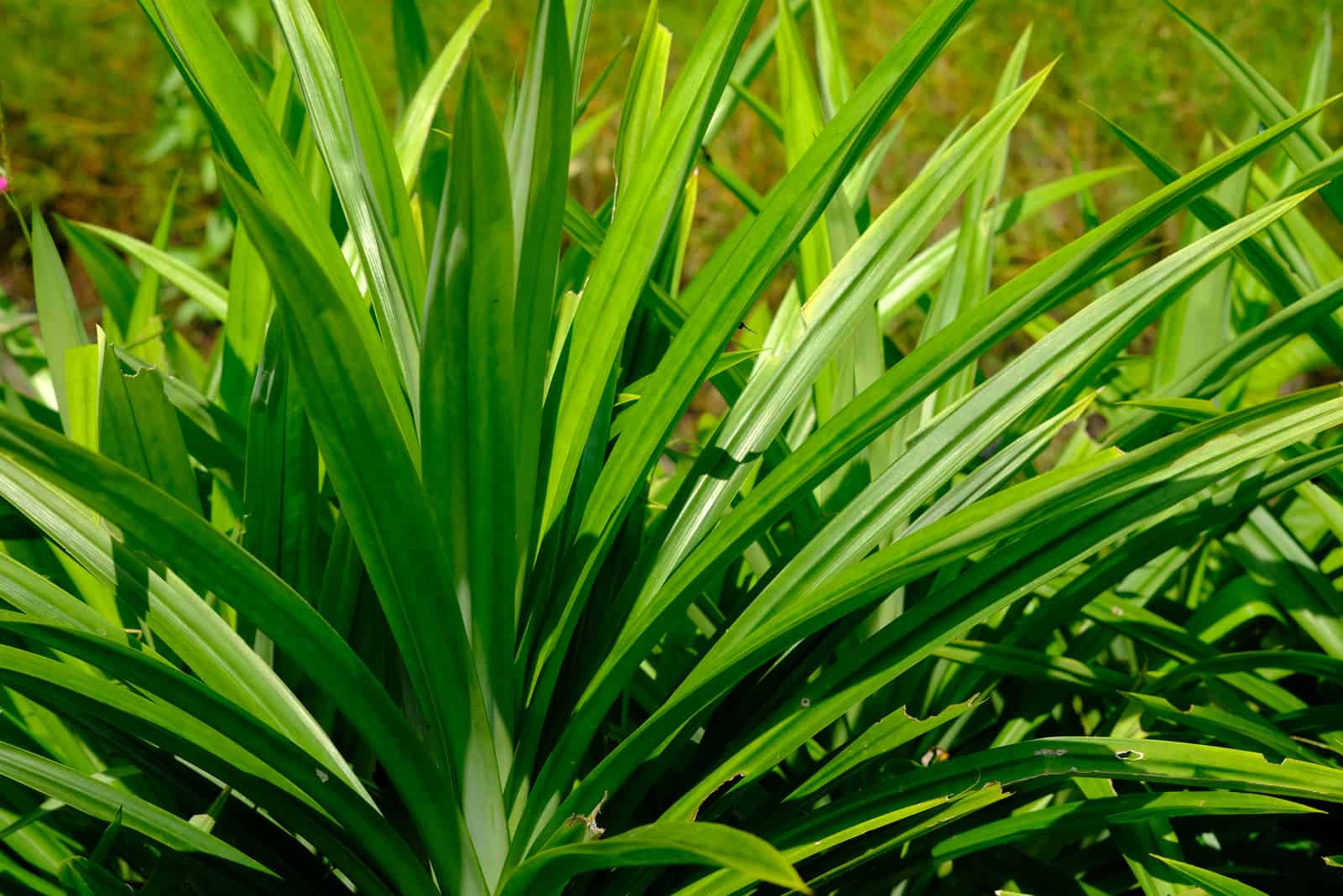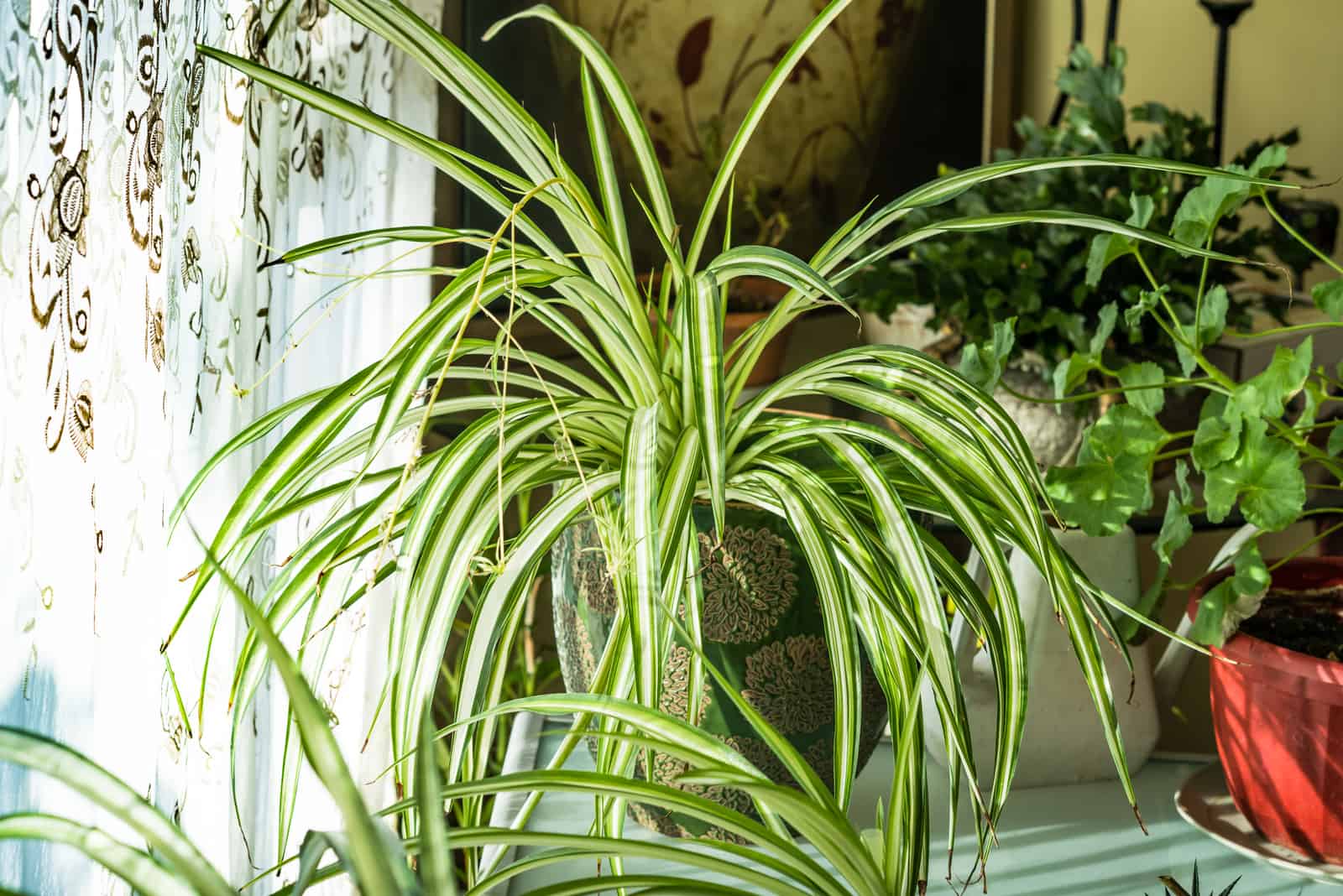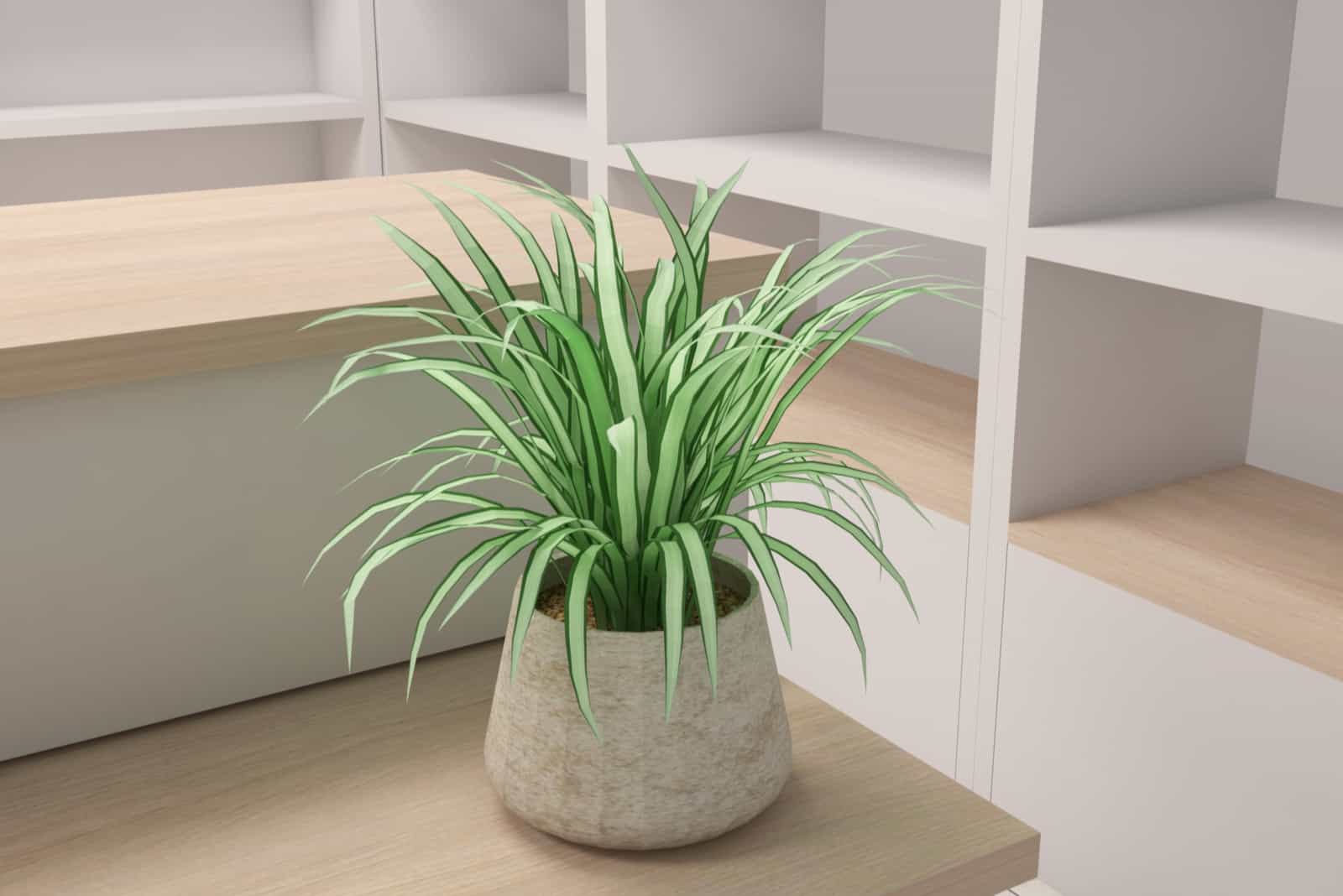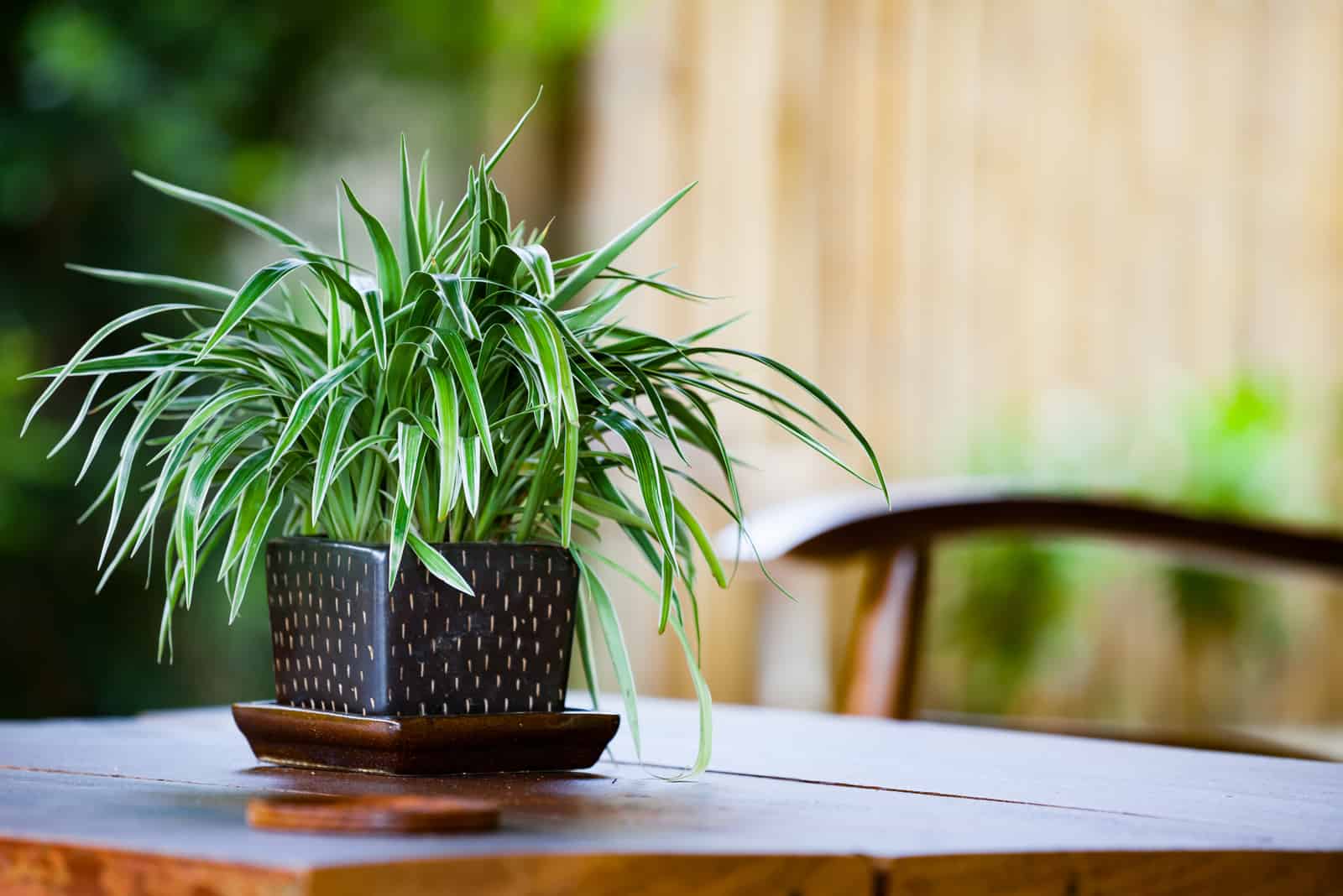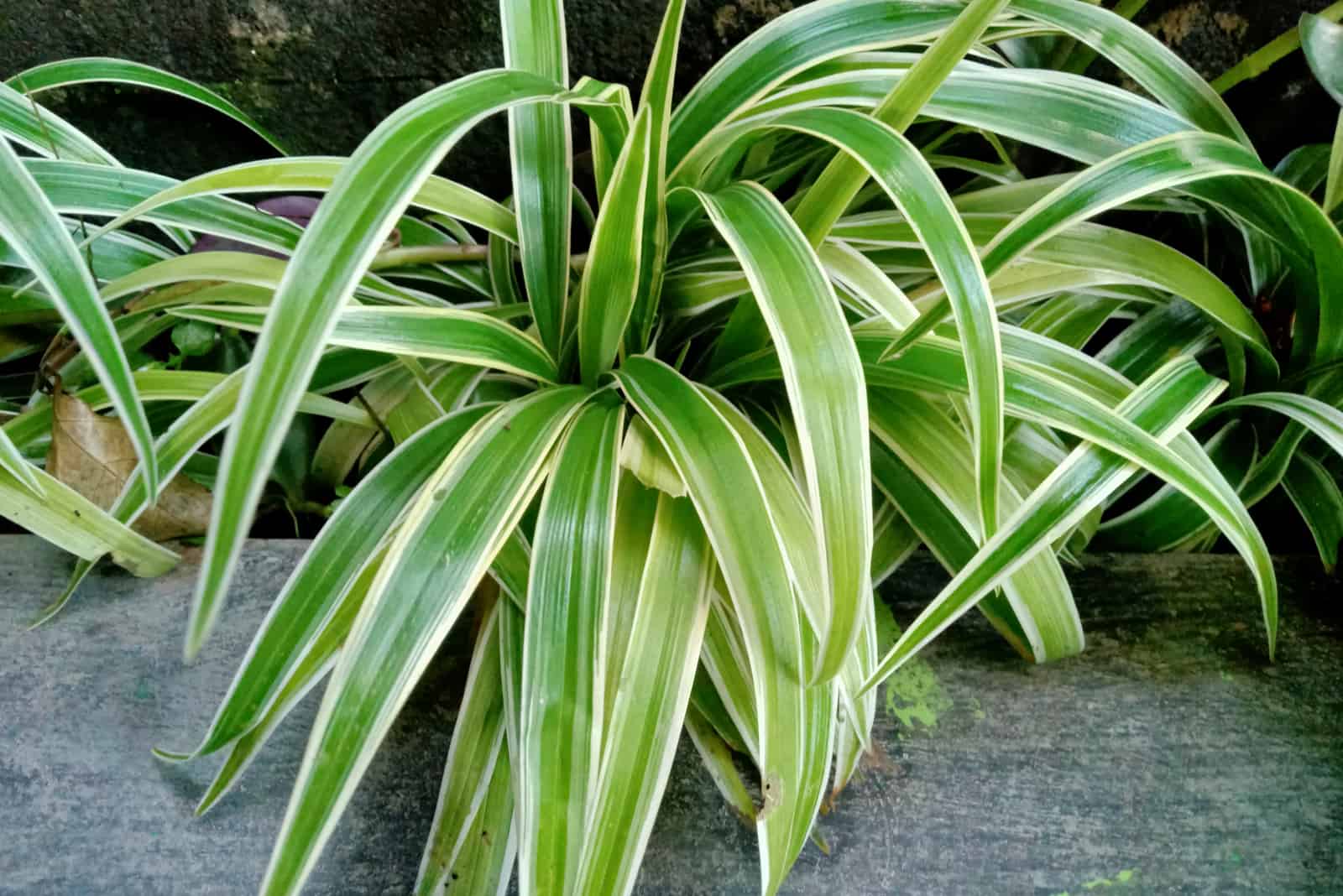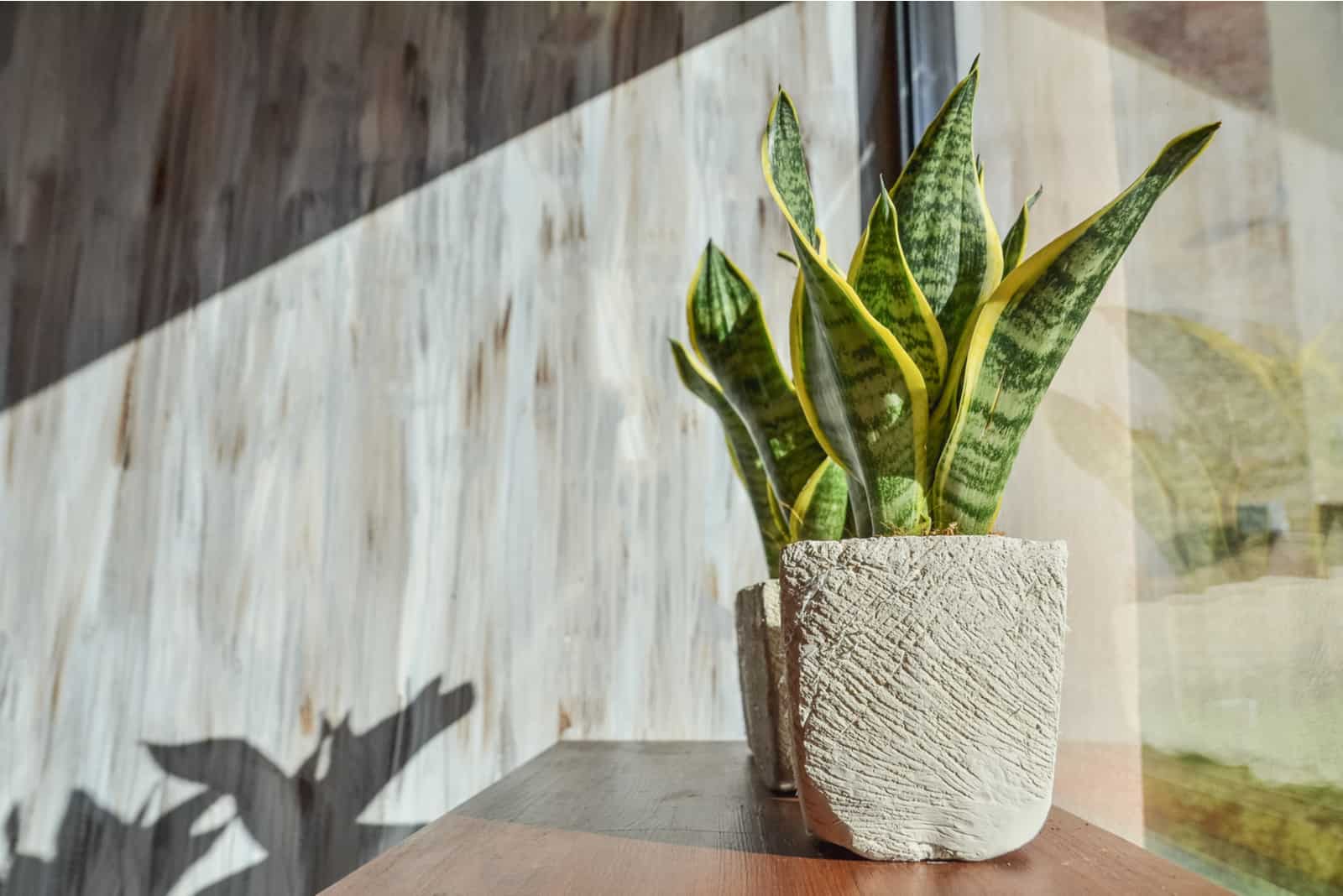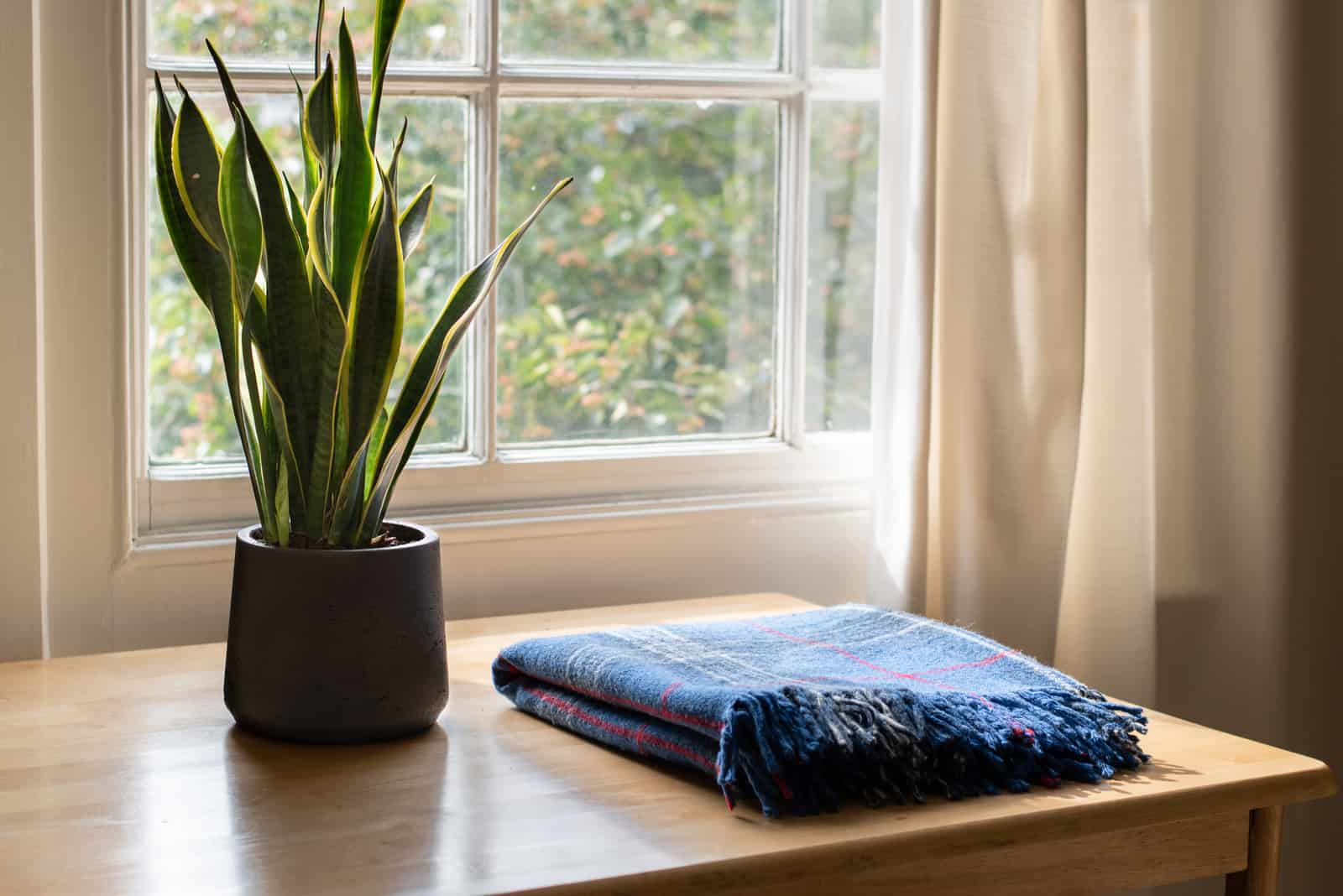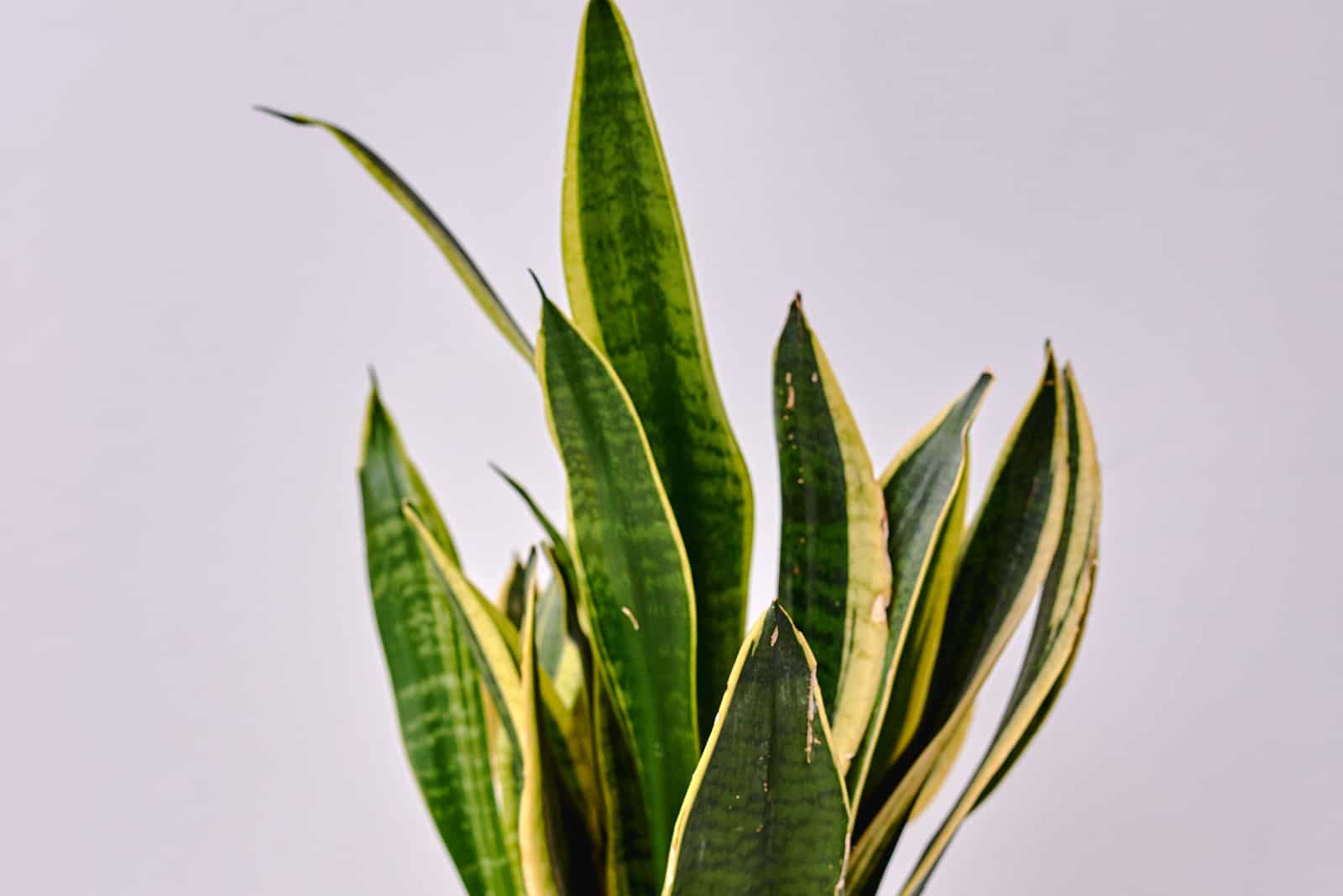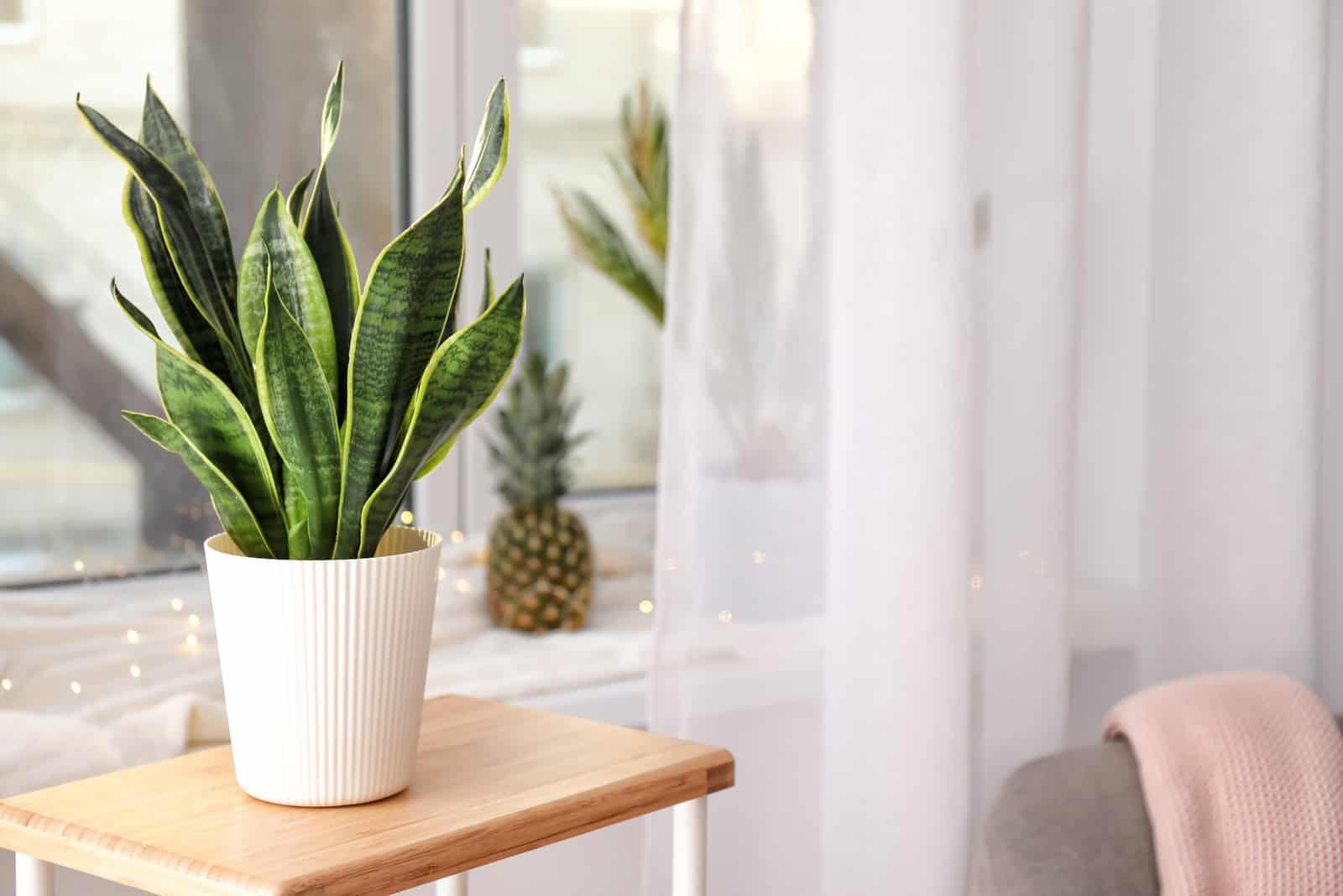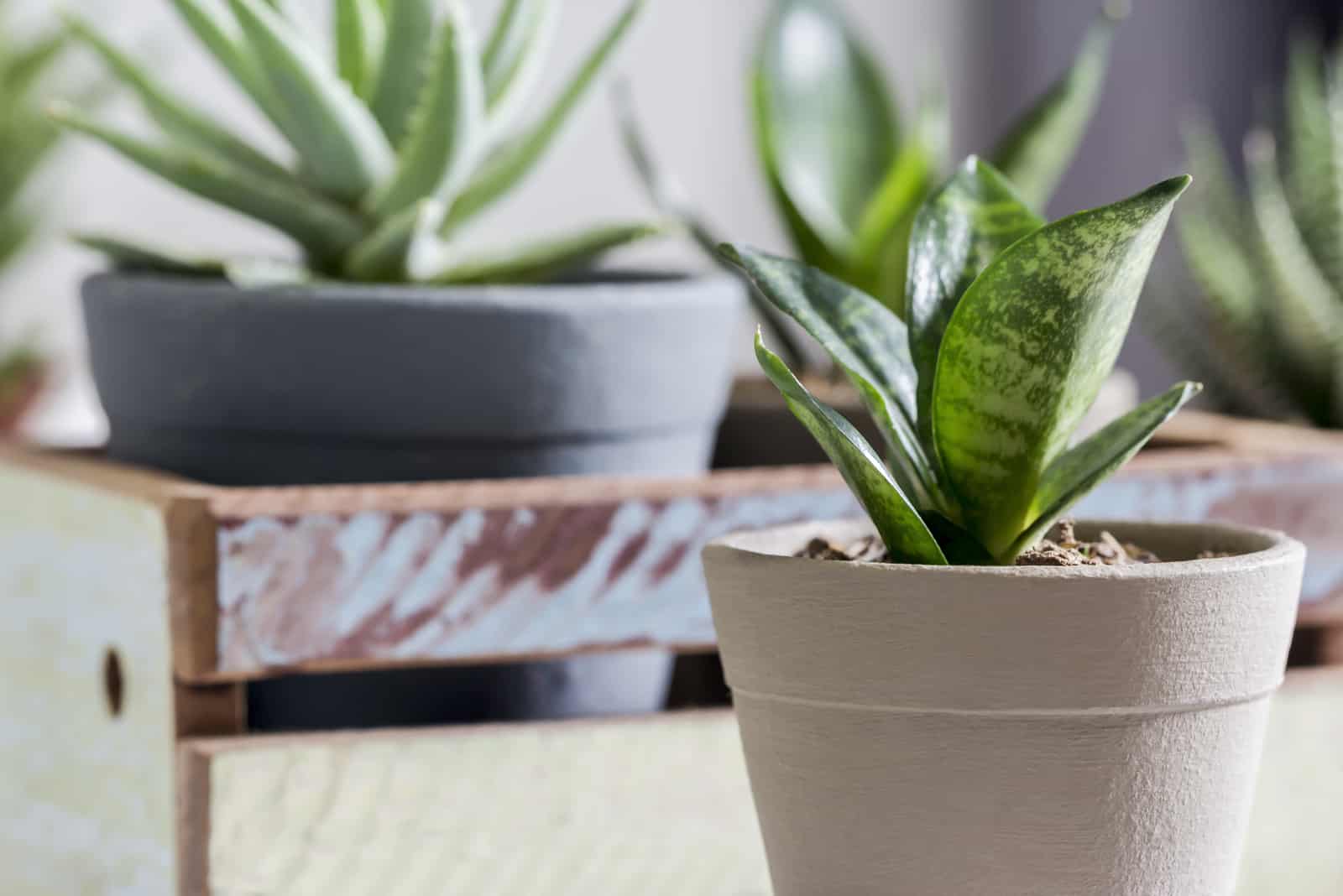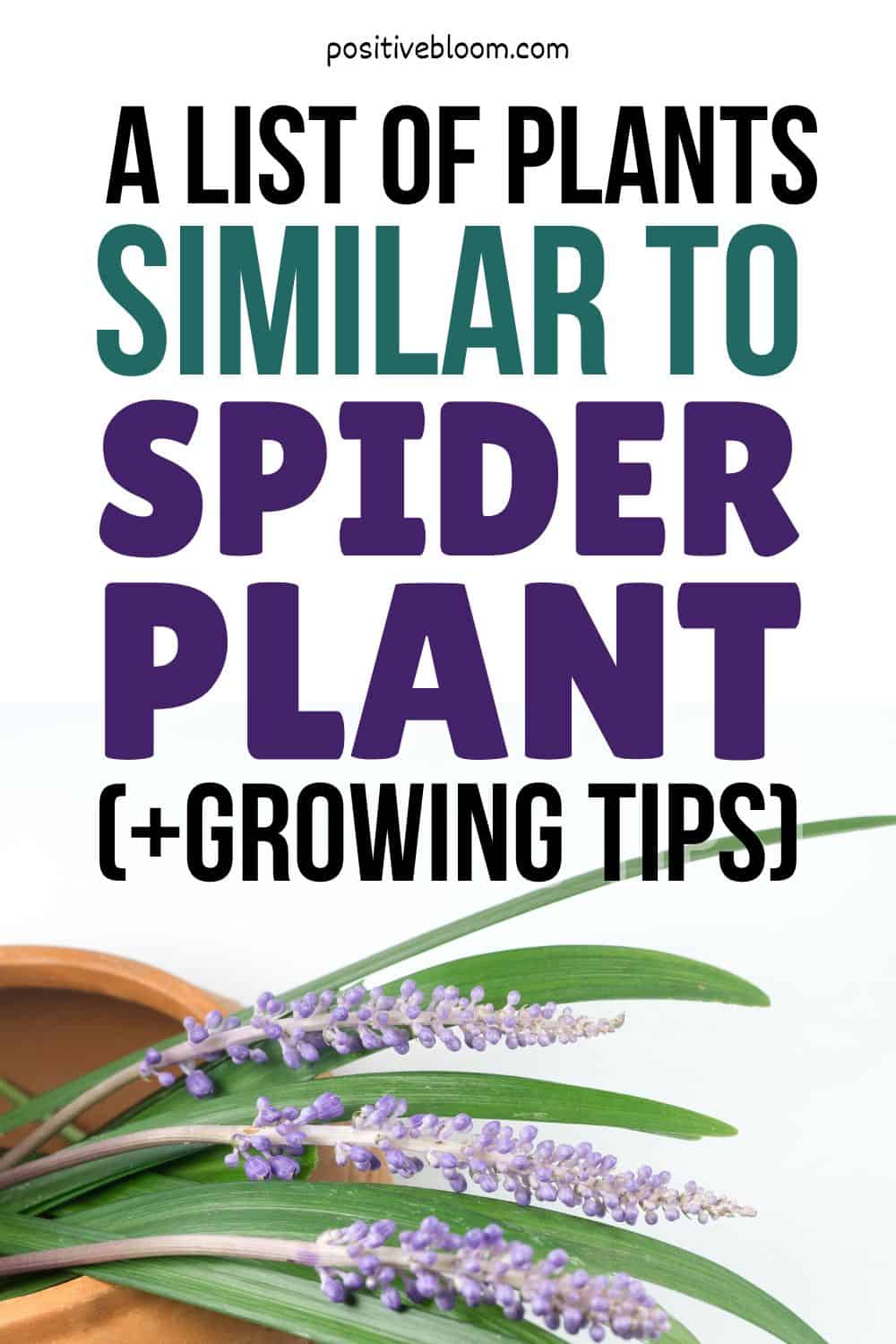No, spider plants don’t attract spiders – they are called spider plants because their teeny tiny plantlets resemble arachnids!
You should definitely add spider plants to your collection because they’re beautiful and excellent for interior decor.
However, it can be hard to find some varieties, or you may have them all already and want other plants that are equally as beautiful.
Luckily, there are other plants similar to spider plants.
Actually, there are many genera that resemble Chlorophytum, so I’m sure you won’t have much trouble finding one you like.
Before we move on, here is some basic info about the spider plant:
[table id=204 /]Let’s get started!
Plants Similar To Spider Plant
There are few things prettier than a spider plant.
There are some plants that closely resemble them, though, so if you are into ribbon plants you’ll love the options on my list.
Check out these magnificent plants you can add to your collection that look like airplane plants.
Dracaena
Another genus that belongs to the Asparagaceae family is Dracaena.
This plant group contains a wide variety of plants, the most well-known of which are a tall species with leaves similar to that of spider plants.
Dracaena plants may have the same leaf color, but the leaves are typically wider than ribbon plant leaves.
These plants grow tall and produce woody stems that don’t resemble grass as much as airplane plants.
The good thing is that you can control the size of Dracaena plants by pruning.
Here are some beautiful Dracaena varieties:
Lemon Lime Dracaena (Dracaena fragrans ‘Lemon Lime’)
The incredible lemon lime Dracena plant has yellow and green leaves with slender white dividing the green and yellow.
The leaves of this variety develop in a rosette pattern around the main stem.
Lemon Surprise
Lemon Surprise plants have magnificent variegated leaves with slender white lines running between the lime green and darker green center.
The leaves are pointy and curly, just like the Bonnie spider plant.
Tricolor
If you are looking for a plant similar to the spider plant, but more colorful, the tricolor Madagascar dragon tree is the perfect choice for you.
You can see three different colors on the Madagascar dragon tree plant: green, shades of red, and cream.
The narrow leaves have cream centers with edges that come in different shades of red, and green stripes between them.
Bromeliads
Bromeliads are breathtaking plants, but you won’t find them in every plant collection. However, if you like spider plants you should get yourself at least one bromeliad variety!
Although they can be found in practically any location, this plant is primarily utilized to complement other plants with similar structures.
Here are some amazing Bromeliad varieties:
Tillandsia
Tillandsia is a large genus of the Bromeliaceae family.
The leaves of plants from this genus are grass-like, just like spider plant leaves, and come in green and blue.
Tillandsias produce violet flowers on a slender stem with scarlet bracts.
Cryptanthus
Plants from the Crythantus genus are pot-friendly and have a distinctive growth pattern, with pointed leaves clustered in low, tight rosettes, which have earned them the common name “earth stars.”
Despite their bad reputation, Cryptanthus plants will bloom all year long if they are kept in the right environment.
But the leaves are what really draw people in. They can be banded, speckled, or solid, and the color can vary according to the species (dark green, different shades of pink, and red).
Hechtia
The sword-like leaves of Hechtia plants spread from a rosette.
Some species can also have serrated leaf edges.
The leaves of Hechtia plants come in various colors, such as yellow, crimson, purple, and pink.
Flowers develop on the upright stem and are typically white. However, you may find some varieties that produce pink or yellow flowers.
Snake Plants
Snake plants are low-maintenance and commonly known as the mother-in-law’s tongue.
These plants have erect, thick-textured leaves with a tongue-like growth pattern.
These plants can thrive in low light and low water, and also absorb harmful pollutants like formaldehyde and benzene.
Here are the three best snake plant varieties that look like spider plants:
Sansevieria ‘Laurentii’
Otherwise known as the variegated snake plant, Sansevieria laurentii has fleshy, deep-green leaves with pointed ends and yellow stripes.
When grown outdoors, Sansevieria laurentii can produce orange berries, but not if it’s grown indoors.
Sansevieria Black Gold
The black Gold variety has dark green leaves (almost black) with golden margins that resemble swords. These prickly leaves can reach a maximum length of three feet in an open area.
The entire genus can endure a variety of indirect light conditions, from complete shade to partial shade. Additionally, they are extremely resilient to watering neglect.
This makes them a good choice for enhancing any area of your home, patio, or yard.
Sansevieria Bantel’s Sensation
This plant is commonly known as White Sansevieria, and is actually a cultivar of Sansevieria trifasciata.
It’s pretty easy to differentiate this cultivar from other Sansevieria plants because it features pointed dark green leaves with white stripes in the middle.
Japanese Sedge Plant
Carex morrowii, commonly known as Japanese sedge, is a nice final touch if you’re seeking a striking decorative plant to finish your amazing collection!
This particular plant is not only genuinely endearing, but also highly manageable in terms of its environmental and growth requirements.
Here are some impressive varieties:
Carex oshimensis ‘Evergold’
The Japanese sedge evergold has narrow, arching leaves with a yellow stripe in the center.
These plants typically grow in clumps and can reach up to 11 inches.
This plant fits everywhere – you can grow it in pots and flower beds, so it will make a great addition to your house, garden, patio, or flower border.
Carex Ice Dance
This plant is one of the most exquisite ornamental grasses for the yard. It requires little maintenance and creates a great contrast with other plants.
It produces narrow, glossy green leaves decorated with white edges.
Carex morrowii var. temnolepis ‘Silk Tassel’
Barry Yinger introduced this plant and gave it the name “Silk Tassel” after bringing it over from Japan over 30 years ago.
The breathtaking leaves of the Silk Tassel plant stretch out across the ground.
A silvery-white stripe runs the length of the leaf, with well-defined and deep green borders.
The Silk Tassel looks lovely when planted in large numbers. It’s container-friendly but also makes excellent ground cover.
The Silk Tassel can endure the direct sun if provided with enough water.
Liriope
Despite its grass-like appearance, plants from the Liriope genus are flowering perennials and belong to the Asparagaceae family, just like spider plants.
Liriope plants are commonly known as lilyturf, which refers to the plant’s turf-like growth pattern.
These plants were previously classified as belonging to the lily family. Still, they are now classified as belonging to the Asparagaceae family.
The Liriope genus is named after the Greek nymph Liriope (better known as the mother of Narcissus).
Many growers use Liriope plants as ground covers when they want to prevent erosion.
You can also use it as an edging plant, and it may help you manage weeds.
Here is one of the most popular lilyturf varieties:
Liriope Spicata Silver Dragon
The silver dragon is a rhizomatous, grass-like perennial that grows up to 15 inches tall.
It develops a clump of slender and velvety foliage. In the summer, upright flower spikes appear among the leaves with pinkish-purple to white flowers.
In the fall, bluish berries frequently replace the flowers.
Variegated Buffalo Grass
Buffalo grass is a common type of grass in Florida.
You can find variegated buffalo grass under St. Augustine grass or buffalo turf.
This plant grows as ground cover in its natural habitat.
A great thing about buffalo grass is that it can be grown indoors in pots and looks amazing in hanging baskets.
This type of grass has oblong to ovate dark green foliage that can grow up to 4 inches long, and the plant produces brownish-green flowers on a one-sided spike.
Buffalo grass is similar to spider plants as its leaves have cream variegations running down the middle.
Pandanus Plant
Pandanus plants are commonly found growing close to the coast in swampy or damp places near rivers and streams.
The leaves of pandanus plants are pointy, and the most common varieties have green edges with yellow stripes in the central part.
These plants are pretty tricky, and you’ll know that you’ve accidentally grabbed a pandanus leaf because all the leaves have nasty, sharp spines!
Pandanus plants resemble spider plants in appearance, but you shouldn’t touch them.
Types Of Spider Plants
Can you believe that there are over 200 varieties of spider plants? This is why it can be pretty hard to differentiate them.
So, let’s look at some of the most common Chlorophytum varieties perfect for your plant collection.
Variegated Spider Plant (Chlorophytum Comosum ‘Variegatum’)
The Chlorophytum comosum ‘Variegatum’ green leaves have a distinct cream stripe running down the middle.
This spider plant’s distinctive slender leaves arch outward from a rosette at the base.
The variegated spider plant is indigenous to South Africa. You can grow it as an outdoor or indoor plant if you live in a warm climate.
The Chlorophytum comosum ‘Variegatum’ is pretty easy to grow. You can expect it to reach one to two feet if grown in adequate conditions.
As far as light is concerned, the standard variegated type of spider plants thrives in bright indirect light.
Always choose a soil mix that ensures good drainage.
The ideal temperature for this spider plant ranges from 50 to 70 degrees Fahrenheit.
Variegated Bonnie Spider Plant (Chlorophytum comosum ‘Bonnie Variegated’)
Bonnie curly spider plant has both a standard and variegated version. The Bonnie curly differs from the other spider plant types due to its compact structure, and it rarely grows taller than 8 inches.
The variegated version may produce flowers when provided with perfect conditions.
However, you will rarely see them bloom indoors.
You will have the chance to see the fragrant, star-shaped, white blossoms if you happen to be in the warmest areas of South Africa during the growing season in spring or summer.
The best idea would be to put your Bonnie curly close to a window that gets enough sunshine, but keep it out of direct sunlight to avoid damaging the leaves.
Only water your Bonnie when you notice the soil has dried out completely.
Your Bonnie needs high humidity, so keep levels between 40 and 70%.
Zebra Spider Plant (Chlorophytum Laxum’ Zebra’)
The zebra spider plant is one of the most popular Chlorophytum varieties and a well-known air purifier.
According to NASA, it removes pollutants like benzene, xylene, and formaldehyde from the air.
Its slender green leaves have yellow edges, and as the Laxum zebra matures the edges turn white.
Additionally, adult zebra spider plants develop plantlets from stems, and the stems develop white flowers. The common name of this variety is zebra grass because the leaves have a texture that resembles grass.
You will need to use peat-based soil and keep temperatures between 65 and 75 degrees Fahrenheit.
Zebra grass is an ideal plant for beginners. Due to its low-maintenance requirements, this has become one of the most popular houseplants, which is why it’s available in many nurseries nowadays.
Hawaiian Spider Plant (Chlorophytum Viridescens ‘Hawaiian’)
Another beautiful spider plant is the Hawaiian spider plant. You can find this plant under the names golden light and golden glow.
Compared to some Chlorophytum types, Viridescens ‘Hawaiian’ is a smaller hybrid.
It is an excellent choice if you want multiple golden glows to embellish your home because it develops many plantlets.
This variety is easy to maintain and can grow up to twelve inches tall.
The Viridescens ‘Hawaiian’ may tolerate lower temperatures, but if you want it to thrive you must try to keep the temperature between 70 and 90 degrees Fahrenheit.
Like other Chlorophytum plants, the golden light enjoys wet, well-draining soil and indirect light.
Chlorophytum Comosum ‘Vittatum’ (Reverse Spider Plant)
Chlorophytum comosum has one more variegated variety – the reverse variegatum spider plant.
The standard variegated variety has green edges and cream white stripes, and the reverse variegated variety has a green center and cream-white edges.
A mature vittatum reverse spider plant can reach two to three feet in height and 3 feet in width.
The leaves can grow up to 16 inches. This variety enters dormancy in winter if you live in USDA growing zone 8.
On the other hand, in zones 10 and 11 the reverse variegated spider plant grows as an evergreen perennial.
This plant can’t withstand full sun exposure, so you need to be extra careful about where you put it. The watering schedule of the reverse spider plant depends on light, humidity, and temperature.
It needs more water during summer because of the higher temperatures and its active growth.
Bichetii Grass (Chlorophytum Laxum)
The Bichetii grass plant closely resembles the original variety. It features green, arching leaves with cream-colored exterior borders.
Its leaves have a grass-like texture, and this variety often produces white flowers.
Bichetii Grass differs from other types in that it doesn’t generate young plants. If you want a variety without offshoots, this is the perfect Chlorophytum plant for you.
You can expect it to grow about one to two feet tall.
It’s not a fussy plant, and it will reach full size even if you forget it occasionally.
You need to ensure it has a spot with partial shade and soil with good drainage.
Ocean Spider Plant (Chlorophytum Comosum ‘Ocean’)
If you are looking for a Chlorophytum variety to grow in hanging baskets, the Comosum ocean is ideal for you.
They look similar to the original, but Comocum ocean plants have white on their foliage.
The leaves of this plant are gorgeous when they are allowed to flourish and spread out over the pot.
This hanging plant can grow up to 8 inches and requires medium to high humidity.
The Comosum ocean is a low-maintenance plant, but you’ll need to be careful about some conditions.
It can’t withstand direct low light. Keep your Comosum ocean away from direct sunlight; if there is no adequate light, feel free to use artificial light.
Heirloom Green Spider Plant
Now I want to present to you the rarest type of spider plant, the fascinating heirloom green.
This cultivar hasn’t been distributed commercially since the 1970s, so finding it is quite difficult.
But if you do happen to find one, your plant collection will look better than ever because of its impressive glossy solid green leaves that grow in an arcing motion.
If you are lucky enough to get your hands on an heirloom green, you can grow it in hanging baskets, standard pots, or even use it as ground cover!
This variety is extremely sensitive to low light or bright light, so you’ll need to find a balance.
Either place it a few feet away from a sunny window or get grow lights in case there’s lower light conditions.
Spider Plant Care Guide
Spider plants are very common houseplants, and they have it all! They are easy to maintain, look amazing, and aren’t toxic, unlike most other houseplants.
I have some tips for how to properly care for spider plants and help them thrive better than ever.
You should also check the plant regularly for spider mites.
Light
Although the hardiness of these plants is well known, they dislike direct sunlight because it burns their leaves.
On the other hand, if you notice your spider plant has pale leaves you might want to check if the light is too low.
They flourish in locations with indirect, bright light.
Humidity
Anywhere between 40 and 70% humidity works great for Chlorophytum plants.
Your plant may grow well in lower humidity, but you’ll need to increase it if it’s struggling to survive.
If you aren’t sure how to increase humidity levels, consider buying a humidifier. You can also place a humidity/pebble tray below the pot, or simply move your spider Ivy to the kitchen or bathroom.
A great method for plants that require high humidity is misting the leaves frequently.
Temperature
Airplane plants are not heat or cold-tolerant, so you should maintain temperatures between 60 and 80 degrees Fahrenheit.
Chlorophytum plants also hate temperature fluctuations, so keep them away from heat sources to avoid temperature stress.
Soil
Here are some recommendations for the best potting mixture for ribbon plants:
• You must maintain a pH between 6.0 and 6.5 because this plant needs slightly acidic soil.
• You need a potting mix that drains well. To help the soil drain properly, buy standard potting soil and add materials that improve drainage, such as sand or perlite.
Watering
The time of year and temperature affect how often airplane plants need to be watered.
For instance, these plants need more water in the summer than in the winter.
These tropical plants go into dormancy in the winter; think of it as a time for rest and renewal.
You should water your ribbon plant every few days during the growing season because the soil dries very rapidly in higher temperatures.
Fertilizing
You’ll need to prepare extra food for your spider Ivy during the growing season.
Fertilize your ribbon plant every two weeks with a balanced liquid fertilizer.
Don’t fertilize in the fall or winter because your spider plant is dormant and won’t require additional nutrition during this period.
Pruning
This plant can use a little pruning now and then to restore its vigor and health, but you can’t simply trim the tips of the leaves and hope it will turn out well.
Always use sterile shears or pruners, and trim the leaves at the base of the ribbon plant. To prevent damaging your plant, ensure that the shears or pruners are sharp enough.
Spider Plants: Propagation Methods
You can get a lot of new baby spider plants by either rooting baby plantlets or root division.
Both methods have a high success rate, and it’s totally up to you which one to choose.
Let’s learn more!
Rooting Baby Plantlets
The most popular technique for propagating ribbon plants is to grow them from babies, and there are a few different ways to do so.
Even though they are still connected to the mother plant, you can root babies in soil.
Another way is to cut off the babies and place them in a water or propagation box.
Once the babies start producing starter roots, you can separate them from the mother plant.
When you touch the babies, they occasionally fall off without any effort; you don’t even need to use cutting tools!
It actually doesn’t matter where you remove the babies from the parent plant. To avoid the stem protruding in an unsightly way, I prefer to cut them nearest to plantlets.
You should now root the babies. You can place them in a clear jar filled with water or root them directly in the soil.
You can also propagate the ribbon plant while it’s still connected to the parent plant. Select babies with starter roots and bury them next to the parent plant.
Now replant the cuttings and resume your usual care when you notice new growth.
Division
Another typical method of airplane plant propagation is division, which is the best choice if your plant hasn’t produced any offshoots.
You can divide them only if at least two clusters are developing in the pot.
If your spider plant is mature and rootbound, dividing it can be challenging.
You’ll probably need to use a sanitized knife to cut through the ribbon plant’s roots if they are particularly thick and closely packed.
After you divide the ribbon plant, place each section in a pot.
You’ll soon have a ton of brand-new plants to add to your plant collection, or perhaps you could gift them to your loved ones!
FAQs
Why are spider plants called spider plants?
Spiders definitely do not evoke feelings of serenity. It does seem unusual that the name spider plant would be given to a plant as lovely as the Chlorophytum comosum.
However, there is a legitimate explanation for it. The parent spider plant’s shape is similar to that of a spider, and its babies, known as spiderettes, also resemble small spiders.
What are the differences between a spider plant and a philodendron?
Spider plants and Philodendrons differ, well, in everything! First, these plants belong to different families – Asparagaceae and Araceae.
They also differ in that they belong to other genera – Chlorophytum and Philodendron.
Philodendrons have heart-shaped leaves, unlike ribbon plants, which have narrow arching leaves.
Philodendrons are toxic, whereas Chlorophytum plants are human and pet-friendly.
Wrapping Up
Plants from the Chlorophytum genus are the most common houseplants because they are non-toxic, easy to care for, and look amazing.
There are many types of spider plants, and each has a unique appearance.
It may be challenging to find certain varieties, but fortunately there are plants similar to spider plant, and I’m sure they will make a great addition to your collection.
Good luck and until next time!
Like this post? Share or pin it for later!

